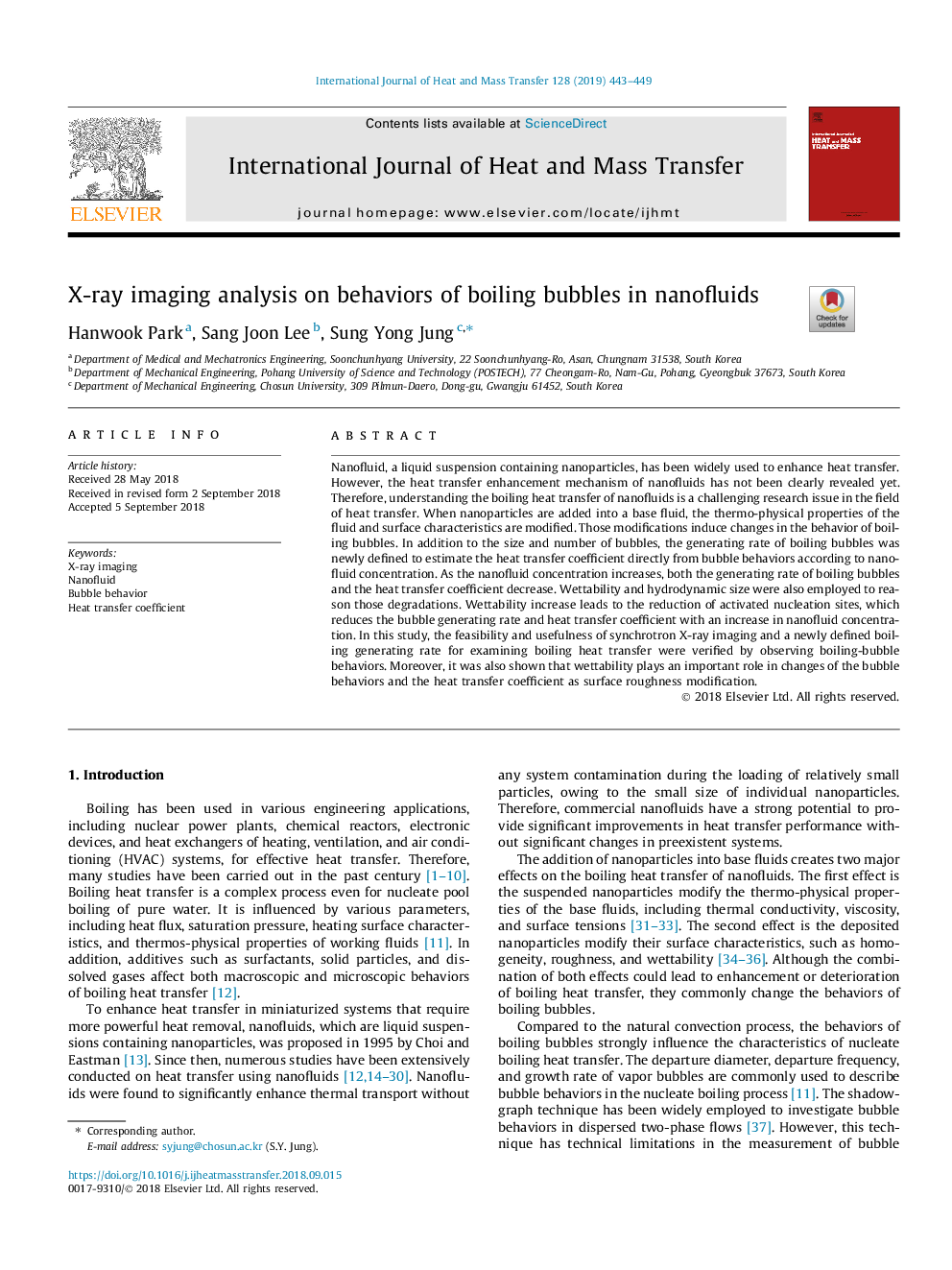| Article ID | Journal | Published Year | Pages | File Type |
|---|---|---|---|---|
| 10139895 | International Journal of Heat and Mass Transfer | 2019 | 7 Pages |
Abstract
Nanofluid, a liquid suspension containing nanoparticles, has been widely used to enhance heat transfer. However, the heat transfer enhancement mechanism of nanofluids has not been clearly revealed yet. Therefore, understanding the boiling heat transfer of nanofluids is a challenging research issue in the field of heat transfer. When nanoparticles are added into a base fluid, the thermo-physical properties of the fluid and surface characteristics are modified. Those modifications induce changes in the behavior of boiling bubbles. In addition to the size and number of bubbles, the generating rate of boiling bubbles was newly defined to estimate the heat transfer coefficient directly from bubble behaviors according to nanofluid concentration. As the nanofluid concentration increases, both the generating rate of boiling bubbles and the heat transfer coefficient decrease. Wettability and hydrodynamic size were also employed to reason those degradations. Wettability increase leads to the reduction of activated nucleation sites, which reduces the bubble generating rate and heat transfer coefficient with an increase in nanofluid concentration. In this study, the feasibility and usefulness of synchrotron X-ray imaging and a newly defined boiling generating rate for examining boiling heat transfer were verified by observing boiling-bubble behaviors. Moreover, it was also shown that wettability plays an important role in changes of the bubble behaviors and the heat transfer coefficient as surface roughness modification.
Related Topics
Physical Sciences and Engineering
Chemical Engineering
Fluid Flow and Transfer Processes
Authors
Hanwook Park, Sang Joon Lee, Sung Yong Jung,
